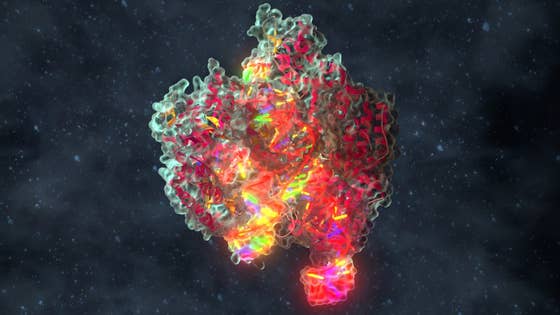Classy CRISPR: Differences between Class 1 and Class 2 Systems
CRISPR-Cas systems can be divided into two main classes based on their effector molecules, class 1 and class 2. Class 1 is defined by multi-unit effector molecules, while class 2 contains a single effector molecule. In this post, we describe the class 1 and class 2 CRISPR systems, their differences and briefly discuss where you can find more information.

CRISPR-Cas9 may be widely known as a gene-editing tool, but it is just one in a complicated CRISPR world. There are two main classes of CRISPR systems, class 1 and class 2, which are further divided into different types. The categorization of CRISPR can get pretty confusing, but we are here to help!
In this post, we will provide you what you need to know about various CRISPR systems, including the following:
What are the different CRISPR systems?
CRISPR systems are divided into two main classes: class 1 and class 2. The main difference between the two classes is their effector molecules: Class 1 effectors contain multiple subunits while class 2 effectors are single large proteins. The specific types within each class depend on the specific Cas endonuclease responsible for cleavage and its mechanism of action.
In the next few sections, we will go over some of the main differences between class 1 and class 2. If you get lost, don’t worry, we have made the following table to help you pick out the key takeaways.
Table 1: Class 1 versus Class 2 CRISPR systems
What Are Class 1 CRISPR Systems?
Class 1 CRISPR systems can be further subdivided into 3 types (type I, type III, and type IV) and 12 subtypes. The class 1 system is found in 90% of the CRISPR loci in bacteria and archaea and can target both DNA and RNA.
Class 1 CRISPR systems are characterized by their multiple effector molecules. The effector molecules contain complexes that are responsible for RNA recognition and crRNA binding. Class 1 effector molecules are similar between the types, despite their distinct sequences.
Type I and type III are the more common class 1 systems. Both contain proteins responsible for pre-cRNA processing, crRNA and target binding, target cleavage, spacer insertion, and regulation. However, a close look at their detailed structure reveals differences between the two.
Type I
There are seven different subtypes of class 1, type I CRISPR systems. All class 1 type I subtypes contain cas3 loci that have the ability to unwind double-strand DNA and RNA-DNA complexes in order to facilitate target cutting. However, the different subtypes have effector molecules made up of different components. Further, type I systems can only target DNA.
Type III
Similar to type I, type III systems are all share a common cas loci, in this case, cas10. Cas10 encodes something similar to an RNA recognition motif called Palm and a cyclase domain responsible for cutting. Type III systems can recognize both DNA and RNA for cleavage. Although there are far fewer subtypes of type III than type I, each type III subtype is more diverse in terms of the operon structure.
Type IV
Type IV is a putative class 1 system, whereby relatively little is known about it compared to types I and III. In class 1, type IV systems, the effector molecular is much smaller (albeit, still multiprotein), and does not contain domains capable of target cleavage or spacer insertion.
What are Class 2 CRISPR systems?
Class 2 CRISPR systems are characterized by the presence of a single effector molecule. There are 3 types of class 2 systems, and 9 subtypes. While class 2 systems are more commonly known (Cas9 is a class 2 system), they only represent 10% of the CRISPR loci and unlike class 1, they are only found in bacteria.
Class 2 systems can target both DNA and RNA, depending on the type.
Type II
The most common class 2 system type is type II. Type II systems are characterized by the presence of Cas9, as well as ancillary proteins cas1 and cas2. Cas9, the commonly used genome engineering endonuclease is a type II system. Type II systems require a tracrRNA for function.
Types V and VI
Type V systems commonly use Cas12 as their endonuclease of choice. Like Cas9, Cas12 targets DNA for editing. Similar to type II systems, type V also requires tracrRNA for function. Type VI is the only class 2 system that targets RNA for editing. Cas13 is a type VI endonuclease that enables the editing of RNA.
CRISPR is being widely used and studied as a tool for addressing disease modeling and drug or target screening. However, Omar Abudayyeh and Jonathan Gootenberg, have harnessed the power of Cas13 (class 2, type VI) to make CRISPR a diagnostics tool. With the help of Cas13, SHERLOCK (Specific High sensitivity Enzymatic Reporter unLOCKing) was created to search and detect specific sequences in the genome. It has been successfully shown to detect both Zika virus and certain strains of dengue fever. Recent advancements in SHERLOCK are in progress in hopes to develop a greater breadth of disease detection.
We provided you the basics you need to know about class 1 and class 2 CRISPR systems. If you are looking to learn more details about each type, their protein structure, origins, and mechanism of action, be sure to visit the brief but descriptive articles: SnapShot: Class 1 CRISPR-Cas Systems and SnapShot: Class 2 CRISPR-Cas Systems.
 The Bench
The Bench